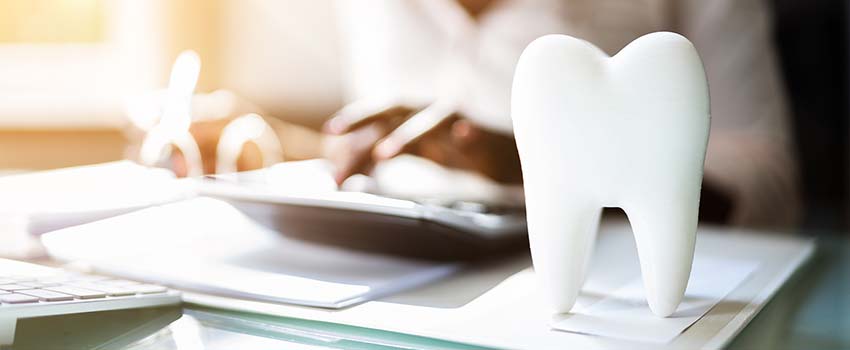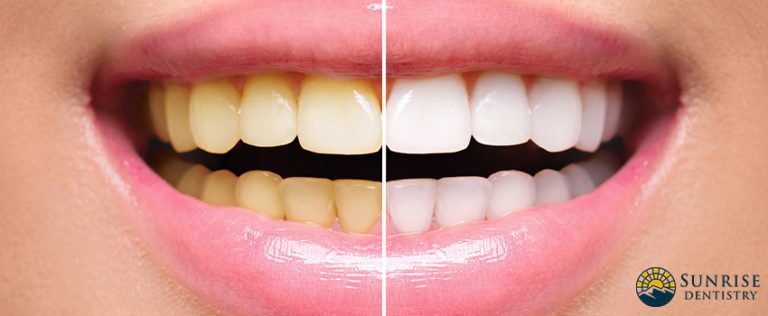Teeth are a fascinating part of human anatomy.
They are an integral part of the digestive system that breaks down food into smaller pieces, making it easier for the stomach to digest.
Teeth are also an important part of speech. The teeth, lips, and tongue control the air flowing out of the mouth to create sound. We also form sounds by striking the tongue against the teeth.
Teeth also allow us to express emotions and form facial expressions, influencing how we interact with other people.
Here’s one of the facts about teeth you might not know: they’re not bones. Indeed, they’re both white and store calcium, but that’s where the similarities end. Teeth are not made of living tissue, which means they’ll wear out and won’t grow back, unlike bones, which are made of living tissue, allowing them to heal and grow over time.
That’s one of our many dental facts of the day. Your teeth may seem boring, but they are not. Here are some interesting dental facts to learn about.
Interesting Dental Facts and Trivia to Learn
Are you ready to learn about fascinating dental facts and tips about teeth? Let’s go!
You are born with teeth.
Some common facts about teeth: most of us are born with our milk teeth, fully formed teeth in our gums that grow out during teething.
Here are some weird facts about teeth: some babies are born with natal teeth or teeth present when they’re born. These are considered good omens in some cultures; however, natal teeth are not healthy like normal ones. They have weak roots and are not fully developed. They are often small, loose, or brown or yellow and may cause problems with breastfeeding.
Natal teeth are rare, and their cause is unknown.
There’s a Teeth Bank in Norway.
A teeth bank is among those weird facts about teeth that won’t seem bad once you learn why they exist.
The Norwegian Mother and Child Cohort Study exists to study diseases among mothers and children. One of the ways they do this is by collecting 100,000 baby teeth through The Norwegian Mother and Child Research Biobank for Milk Teeth.
Established in 2008, the tooth bank has since collected 35,000 milk teeth, and it aims to be the biggest tooth bank for research purposes in the world.
They chose to collect milk teeth because they are durable when stored dry, allowing them to last for a hundred years. They are also a treasure trove full of biomarkers that paint the story of a child’s environment, nutrition, contaminant or toxin exposure, and diseases.
All the knowledge and teeth information they gather helps them find the causes of children’s diseases and conditions and hopefully prevent them in the future.
Right-handed people chew on the right side of the mouth.
In a study published in the Journal of the Massachusetts Dental Society in 2001, researchers studied the effect of a person’s preferred chewing side on the amount of dental treatment they will need.
They surveyed 112 participants to determine if their Decayed, Missing, and Filled (DMF) scores can help predict or find out a participant’s dominant chewing side. They also had the participants undergo oral and radiographic exams.
Their results show that women believe they prefer to chew on one side than another, and men feel they equally chew on both sides of their mouth.
Another study published in the Journal of Oral Rehabilitation in 2004 wanted to determine if chewing was similar to handedness, or a person’s tendency to prefer one hand over the other. After having 189 participants undergo laterality tests and patient questionnaires, results showed most patients who preferred chewing on the right side of their mouth were also right-side dominant.
Their dental issues, gender, and dentures did not affect their preferred chewing side.
Tooth decay is the number one children’s chronic disease.
This is one of the important facts about teeth we should know.
Tooth decay is so common in children; it’s five times more common than asthma, seven times more common than hay fever, four times more frequent than early childhood obesity, and 20 times more frequent than diabetes.
Leaving tooth decay untreated will cause serious problems like malnourishment, speech problems, learning problems, and more.
If your child is complaining about a toothache, schedule a dental appointment as soon as possible.
Every person’s tongue and teeth are unique.
More dental facts of the day to learn about: your oral cavity protects the tongue, which works in concert with your teeth and mouth in day-to-day functions like eating and talking. It also has one of the strongest muscles in the human body. But did you know every individual’s tongue and teeth are as unique as fingerprints? Even identical twins don’t have the same teeth and tongue surface patterns.
Tongues have different colors, shapes, and surface features unique to a person. They also have different features between males and females. Researchers are even studying how to use them for biometric authentication and forensics.
Every tooth is unique, just like fingerprints and snowflakes. A person’s teeth can tell their age, their habits, what dental treatments they’ve had. It can even identify a person’s gender.
Forensic investigators can also retrieve DNA samples from the pulp found at the tooth’s center. As long as it’s not exposed to fire, a tooth’s pulp can last for hundreds of years.
Stains don’t turn your teeth yellow.
One of the well-known facts about teeth is that coffee, tea, or cigarettes can stain them. However, they don’t turn your teeth yellow.
Teeth turn yellow when the enamel is worn thin, which becomes translucent and allows the dentin layer to show through. Dentin is the layer underneath your enamel that makes up most of your tooth’s bulk. It’s darker in color, softer than enamel, and has a similar composition to bone. Dentin is also sensitive to stimuli. This means, the more yellow your teeth are, the more sensitive your teeth get.
Enamel is the strongest substance in the body.
Enamel is a five on the Moh’s Hardness Scale. It’s about 96% mineral, the highest percentage in any body part. Its incredibly complex structure is composed of oblong-shaped crystals tightly bunched together. These crystals are a thousand times smaller than a strand of hair.
These dental facts about enamel make it sound like it’s indestructible. However, because it’s 96% mineral, it won’t grow back like your bones when they wear down, making it important to take care of your teeth.
Your mouth is home to over 700 types of bacteria.
Here’s one of those dental facts you should know: 700 types of bacteria call your mouth “home.”
Some of them are good, some are bad, and you’ll find most of them on the tongue, where they multiply in number every four to five hours.
Striking the right balance between good and bad bacteria is essential to your oral health. The good bacteria combat the growth of bad bacteria and help you digest food, protecting your teeth from food particles where cavity-causing bacteria thrive.
The bacteria inside your mouth multiply as soon as you are born. Oral bacteria from the mother can be passed to their child, which highlights the importance of oral health during pregnancy.
A smile is highly attractive.
This might be among the facts about teeth that might motivate you to step up your dental care regimen.
In a study published on Cognition and Emotion in 2013, researchers studied the relationship between attractiveness and emotional expressions. The more intense a smile is, the more the participants find a person attractive. It could even compensate for relative unattractiveness. It also showed that facial attractiveness influences the evaluation of happiness; the more attractive the person was, the happier they seemed.
Cheese protects teeth.
Another one of those weird facts about teeth: eating cheese can protect your teeth. It creates a layer over the top of your teeth, protecting them from plaque or acid.
Cheese has high calcium and phosphate levels, helping your teeth grow stronger from the inside. It also balances the pH level of your mouth, reducing your saliva’s acidity and cavity formation.
Still, remember to brush your teeth twice a day!
Blacksmiths and barbers were also “dentists.”
Anyone out there interested in gruesome facts about teeth and their care?
Before the existence of dental licenses, you’d probably head over to the barbershop or to the blacksmith to relieve your toothache.
Many barbers were “trained” in dental procedures. Some knew how to fill cavities or create false teeth, and they existed until 1829. They used “dental pelicans” or “dental keys” to extract teeth without anesthesia. However, they only extracted teeth to relieve pain, not focusing on preventive measures.
Blacksmiths only worked as dentists because they already had the tools, but not necessarily the skills. Sometimes, blacksmiths extract teeth so intensely and incorrectly they would break a patient’s jaw.
Victorians whitened their teeth with charcoal and acid.
Did you know dental facts like these Victorian oral health care techniques?
People living during the Victorian era weren’t ignorant of their dental health; they even had books recommending them to brush at least five times a day. They also had a variety of recipes all about teeth whitening using different mixtures and techniques, some of which involved charcoal. They would grind up the charcoal and mix it with honey. This mixture did whiten their teeth to some degree, but the charcoal would irritate and inflame the gums, leading to gum disease.
They also bleached their teeth using oxalic acid, diluted nitric acid, sodium chloride, or potassium cyanide.
Take Care of Your Teeth
Luckily, you don’t have to visit your barber for dental facts and tips.
You have Sunshine Dentistry’s team of dentists in Durango, CO, to go to for all your dental needs and learn all about teeth care. Call us today! We’ll be more than happy to help you care for your oral health.





